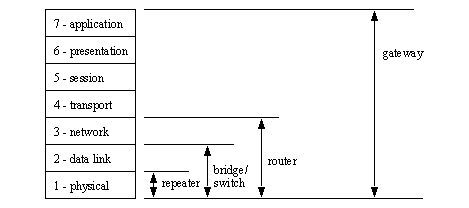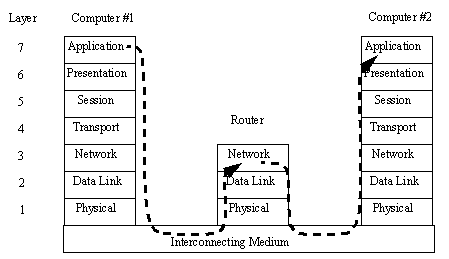NETWORKING HARDWAREThe following is a description of most of the hardware that will be needed in the design of networks. • Computer (or network enabled equipment) • Network Interface Hardware - The network interface may already be built into the computer/PLC/sensor/etc. These may cost $15 to over $1000. • The Media - The physical network connection between network nodes. 10baseT (twisted pair) is the most popular. It is a pair of twisted copper wires terminated with an RJ-45 connector. 10base2 (thin wire) is thin shielded coaxial cable with BNC connectors 10baseF (fiber optic) is costly, but signal transmission and noise properties are very good. • Repeaters (Physical Layer) - These accept signals and retransmit them so that longer networks can be built. • Hub/Concentrator - A central connection point that network wires will be connected to. It will pass network packets to local computers, or to remote networks if they are available. • Router (Network Layer) - Will isolate different networks, but redirect traffic to other LANs. • Bridges (Data link layer) - These are intelligent devices that can convert data on one type of network, to data on another type of network. These can also be used to isolate two networks. • Gateway (Application Layer) - A Gateway is a full computer that will direct traffic to different networks, and possibly screen packets. These are often used to create firewalls for security. Figure 27.1 Network Devices and the OSI Model shows the basic OSI model equivalents for some of the networking hardware described before. 
Figure 27.1 Network Devices and the OSI Model 
|